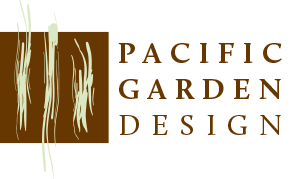One of the most common problems our clients ask us to solve with their landscape design is the need for screening. Sometimes the views to or from the neighbor’s are just too open. Having your neighbors stare down at your barbecue from their deck can certainly put a damper on things, or maybe you’re just tired of staring at the back of their shop from your patio. On a smaller scale, a well-designed landscape can hide eyesores like utility meters, plumbing cleanouts, power poles, and other necessities that nonetheless detract from the landscape. If you’ve become resigned to unsightly features of your landscape, read on for some tips on effective screening.
Consider the Season
When selecting what plants to use for screening, there is naturally a major division to consider: evergreen trees and shrubs vs. deciduous trees and shrubs. The choice between the two depends largely on the seasons during which you are looking for screening. Evergreens tend to be slower growing, but of course have the benefit of retaining their foliage through the winter. The pyramidal form of conifer trees provides less screening at the top than a broadleaf tree of comparable size, which means that they can take a long time to block views or hide large buildings.
The best solution will take the strengths and weaknesses of the plants into account. If you are trying to screen views to and from your patio, which you’ll likely be using only in the growing season, deciduous trees will provide more effective cover. If you are trying to block the view into your bedroom window, however, you’ll want the year-round screening that evergreens offer. In the middle are marcescent trees, which are deciduous but hold their dead leaves through the winter, like beeches and oaks. They might not be the most attractive option, but can provide winter screening across a larger area than a narrow conifer.
Similarly, the plants you use to screen smaller landscape features will depend on where the features are visible from. If you have a white plastic cleanout outside your kitchen window, an evergreen shrub will be the better option for hiding it. A gas meter next to your patio, however, only needs to be hidden when you’re using the patio, so a deciduous plant would work.
Consider the Perspective
While selecting the right types of plants is important, putting them in the right place has an equal impact on the effectiveness of their screening. When there is something we don’t want see, the impulse is often to just put something in front of it to hide it. While that strategy can work for small objects, it tends to backfire when applied to larger views.
If your neighbors have a deck overlooking your yard, a single ten-foot spruce tree along the fenceline isn’t going to do a lot to block it. You’ll need more trees, and they’ll either need to be bigger or you’ll have to wait years for them to grow large enough to provide screening. Focusing on the viewer, however, will provide a better outcome with less expense. Moving that ten-foot spruce tree along the sightline from the neighbors’ deck towards the patio greatly increases the value each tree has. A person on a ten-foot-tall deck won’t have their view affected by the tree if it’s located next to them, but the tree will obscure more and more of the patio the closer it is. Similarly, a person standing on the patio will not be able to see the deck in the next yard if they have a ten-foot tree next to them blocking the view.
This same principle can be used to screen large areas from view. A shop, for example, would require extensive plantings around it to soften its tall walls. Targeting the places from which it is visible, however, can provide a similar effect with more limited effort. Strategically locating planting beds to interrupt the view of the shop from key areas like patios, walkways, and windows, will do as much to screen the shop as completely surrounding the building with trees would.
A little thought and planning can make a big difference in your efforts to screen unwanted views. If you have an eyesore in your landscape that you’re ready to hide, contact us for help finding a solution.






